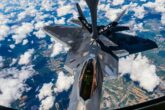April 20, 2017
The Mysterious Case of the Wayward Aircraft Carrier
There is a sobering reality beyond this week’s strange “Where’s Waldo?” story of the USS Carl Vinson and its strike group: For a period of time, significant confusion existed as to the location of a U.S. aircraft carrier strike group, one of the most potent weapons in the American arsenal, at a moment of high tension on the Korean Peninsula.
Although not (yet) a major crisis, this incident portends deep problems with the White House, its chain of command, and its approach to national security. At best, The Vinson episode suggests policy gaps between the president and his top military advisers over how to act toward North Korea. Worse, it appears the president has not firmly established control over the chain of command—or that he possibly overdelegated authority to his generals and admirals. Further, this incident sends deeply disturbing signals to allies and adversaries regarding the president’s control over the military and the credibility of his statements, diluting the deterrent value of American words and actions.
Let’s start with two fundamental premises of U.S. civil-military relations. First, the president is the elected commander in chief of the military; short of declaring war, he has the power to order military deployments and operations, and be held politically accountable for them. Second, the president ought to know with accuracy the locations and readiness of major U.S. military assets, and have the ability to command those forces as needed to protect the country.
Read the full article at Slate.
More from CNAS
-
Are Defense Firms Showering Their Shareholders with Too Much Money?
In early January, President Donald Trump signed an executive order threatening bans on defense contractors paying dividends or buying their stock back. CNAS program director S...
By Stacie Pettyjohn
-
Defense & Aerospace Air Power Podcast: Global View
In a week when airpower news came from every angle, Becca Wasser, CNAS adjunct senior fellow, was on top of it all. She leads defense research at Bloomberg Economics, and we c...
By Becca Wasser
-
National Security Human Capital Program
Dot Gov ’26: The Departments of Defense and Veteran AffairsLast week, Trump called for a record $1.5 trillion defense budget. And at Veterans Affairs, his administration implemented a staffing reorganization. And just last month, it w...
By Katherine L. Kuzminski
-
Balance of Power: Powell Probe Sparks GOP Backlash
President Donald Trump faced rare opposition from key Republican lawmakers after Federal Reserve Chair Jerome Powell accused the Department of Justice of launching a grand jur...
By Becca Wasser




